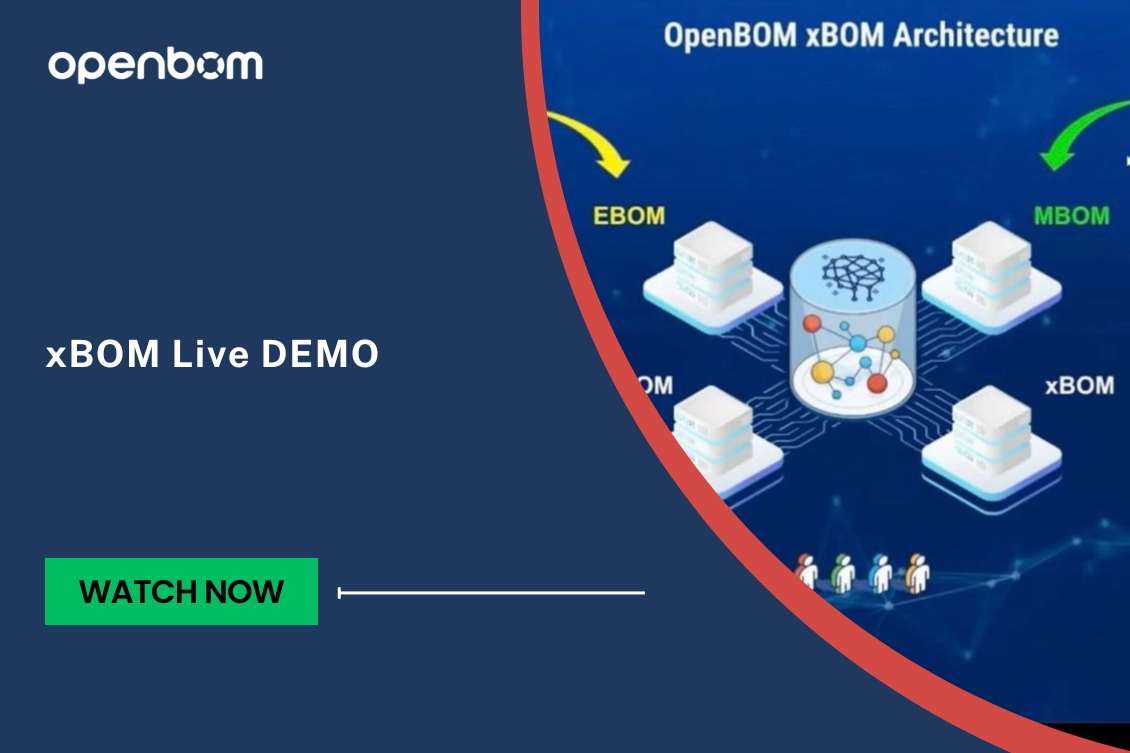
We’re excited to introduce the latest addition to the OpenBOM platform—the xBOM service. This new feature provides a comprehensive framework to manage the full digital twin of your product’s lifecycle. With xBOM, you can manage Bills of Materials (BOMs) for any stage of the product life cycle, offering a complete view of all product data, from design to production and beyond. Whether you are dealing with an Engineering BOM (EBOM), Manufacturing BOM (MBOM), or Service BOM (SBOM), xBOM is designed to streamline your processes and enhance visibility across all product data.
This blog post will provide a comprehensive overview of the xBOM service and highlight its unique features and user-friendly interface, making it an essential read if you’re looking to enhance product lifecycle management processes.
The Foundation: A Flexible Graph-Based Data Model
At the core of xBOM is a flexible, graph-based data model that allows you to define and manage various xBOM types. This extends the OpenBOM product model beyond the standard BOM, often referred to as the Engineering BOM. With this innovative approach, you can seamlessly integrate multiple BOM types into your workflow, ensuring that all aspects of your product’s lifecycle are accurately represented and managed.
Unique Technology: A Product Knowledge Graph
What sets OpenBOM’s xBOM apart is its unique use of a product knowledge graph architecture to create a full data model. This architecture is not only flexible but also scalable, enabling you to define as many BOM types as your project requires.
Whether you need to manage EBOMs directly from your CAD system or build a service BOM structure complete with serial numbers, xBOM is designed to adapt to your specific needs.
Live Demo: EBOM, MBOM, and SBOM Examples
Using xBOM is straightforward, and we demonstrated this in today’s live demo. We walked through two key examples:
- EBOM and MBOM: In this example, we showcased how to create an Engineering BOM directly from a CAD system and then transition to a Manufacturing BOM, illustrating how data flows seamlessly between different stages of the product lifecycle.
- SBOM: In another example, we demonstrated how to create a Service BOM structure, complete with serial numbers. This example highlighted the flexibility of xBOM in handling post-production data and supporting service operations.
- FBOM: Functional BOM structure gives you multiple systems (electronics, mechanicals, system) to model complex system requirements.
These examples underline the ease with which xBOM can be integrated into your existing workflows, providing powerful tools to manage complex product data efficiently.
User Interface and User Experience
One of the standout features of xBOM is how naturally it integrates into the existing OpenBOM user interface. From the regular BOM interface, you can easily switch between different BOM types. If multiple BOMs are available, a list of these will be accessible, allowing for quick navigation.
The same intuitive approach applies to graph navigation, where you can explore specific BOM types with ease, ensuring that even complex data models remain user-friendly and accessible.
Watch the Demo
If you missed the live demo, don’t worry! You can check out the recording here to see xBOM in action and learn how it can enhance your BOM management processes.
Conclusion
OpenBOM’s xBOM service packs the complexity of managing multiple BOM types into a simple, user-friendly interface. This is just the beginning of what xBOM has to offer, with more features and functions on the horizon. Stay tuned as we continue to develop and expand the capabilities of xBOM, bringing even more power and flexibility to your product lifecycle management.
REGISTER FOR FREE and start a trial to explore how you can use OpenBOM xBOM services. Best,
Oleg
Join our newsletter to receive a weekly portion of news, articles, and tips about OpenBOM and our community.










